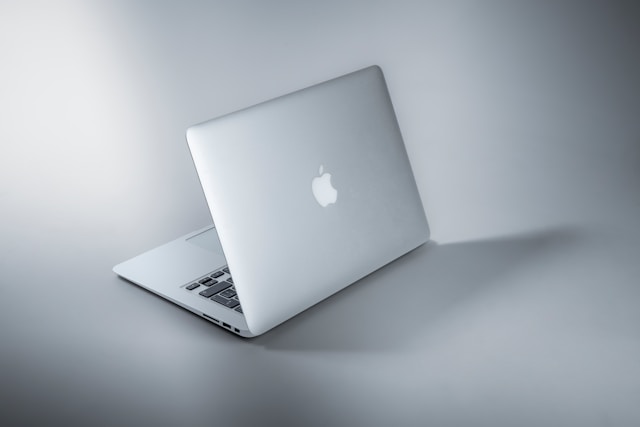- Change theme
The Environmental Impact of Choosing Refurbished MacBooks

In an age where sustainability is more than a buzzword, consumers are becoming increasingly aware of how their buying choices affect the environment.
00:00 23 May 2025
In an age where sustainability is more than a buzzword, consumers are becoming increasingly aware of how their buying choices affect the environment. One often-overlooked way to reduce your ecological footprint is by choosing refurbished electronics—particularly laptops. Among the most sought-after options are refurbished MacBooks, offering users the chance to enjoy high-quality Apple products while also making an eco-conscious decision. But what is the real environmental impact of choosing a refurbished MacBook, and why should it matter to you?
The Problem with E-Waste
Electronic waste, or e-waste, is one of the fastest-growing waste streams in the world. According to the Global E-Waste Monitor, more than 50 million tonnes of e-waste are produced annually, and that number continues to climb. Much of this waste is not disposed of properly, leading to harmful environmental consequences such as soil contamination, air pollution, and groundwater toxicity.
MacBooks, like all laptops, contain heavy metals and non-biodegradable components. When discarded irresponsibly, they can remain in landfills for centuries, releasing hazardous materials that are dangerous to both human health and the environment. Minimizing this waste is a key challenge in achieving global sustainability goals.
The Environmental Benefits of Refurbishment
Refurbishing a MacBook extends the device’s life, preventing it from being prematurely discarded and reducing the demand for new production. Manufacturing a new laptop requires a significant amount of raw materials, energy, and water. For instance, the production of a single laptop generates hundreds of kilograms of carbon emissions—largely from mining rare earth elements, assembling parts, and shipping the product worldwide.
When you purchase a refurbished MacBook, you’re essentially giving that device a second life. This small act helps lower the need for raw material extraction and decreases the overall carbon footprint associated with electronics manufacturing. Furthermore, refurbished electronics typically involve far fewer emissions than recycling since the process focuses on reuse rather than breaking the product down into its raw materials.
Conserving Resources
Mining materials such as lithium, cobalt, and rare earth elements used in MacBooks is a resource-intensive and environmentally damaging process. These minerals are often mined in ecologically sensitive or politically unstable regions, and their extraction can lead to habitat destruction, water pollution, and exploitative labour practices.
By opting for a refurbished MacBook, you are directly helping reduce the demand for these mined resources. A single refurbished laptop saves not just the physical materials but also the energy and water required to assemble a brand-new one. In essence, every refurbished device that goes back into circulation is one less that needs to be manufactured.
Tackling the Throwaway Culture
Modern consumer culture often emphasizes the latest, most powerful technology, even when existing devices still function perfectly well. This mindset fuels overproduction and unnecessary waste. By choosing refurbished, you're making a conscious statement against the “throwaway” mentality that drives so much environmental harm.
In the middle of this conversation about sustainability, it's worth noting that a refurbished MacBook not only saves money but serves as a responsible alternative for anyone looking to balance performance with environmental impact. It symbolizes a shift toward more mindful consumption habits, encouraging others to consider longevity and reuse in their tech choices.
Encouraging Manufacturer Responsibility
The growing market for refurbished products also pushes manufacturers to think differently. As demand for sustainable options increases, companies are more likely to invest in durable designs, modular components, and long-term software support. Apple, for example, has made strides in this direction by designing products that are easier to recycle and offering trade-in programs that facilitate refurbishment.
By supporting the refurbished market, consumers send a strong message to manufacturers: sustainability matters. It promotes a more circular economy where devices are reused, repaired, and repurposed rather than simply discarded.
Supporting Local and Ethical Businesses
Many refurbished MacBooks are sold by smaller businesses or dedicated refurbishing companies that employ skilled technicians. These businesses not only create local jobs but also offer services like extended warranties and customer support, often at a level of care not found in big-box retailers. Supporting these companies contributes to a more ethical and community-based economy.
Conclusion
Choosing a refurbished MacBook isn’t just a cost-saving decision—it’s an environmentally responsible one. It helps reduce e-waste, conserves precious resources, and challenges the culture of overconsumption. In doing so, it promotes a more sustainable, circular approach to technology.
As global awareness around climate change and environmental degradation grows, making mindful choices—like buying refurbished—can collectively lead to significant change. If you’re in the market for a laptop, think beyond the brand-new model. A refurbished option could be better for your wallet, your values, and the planet.
